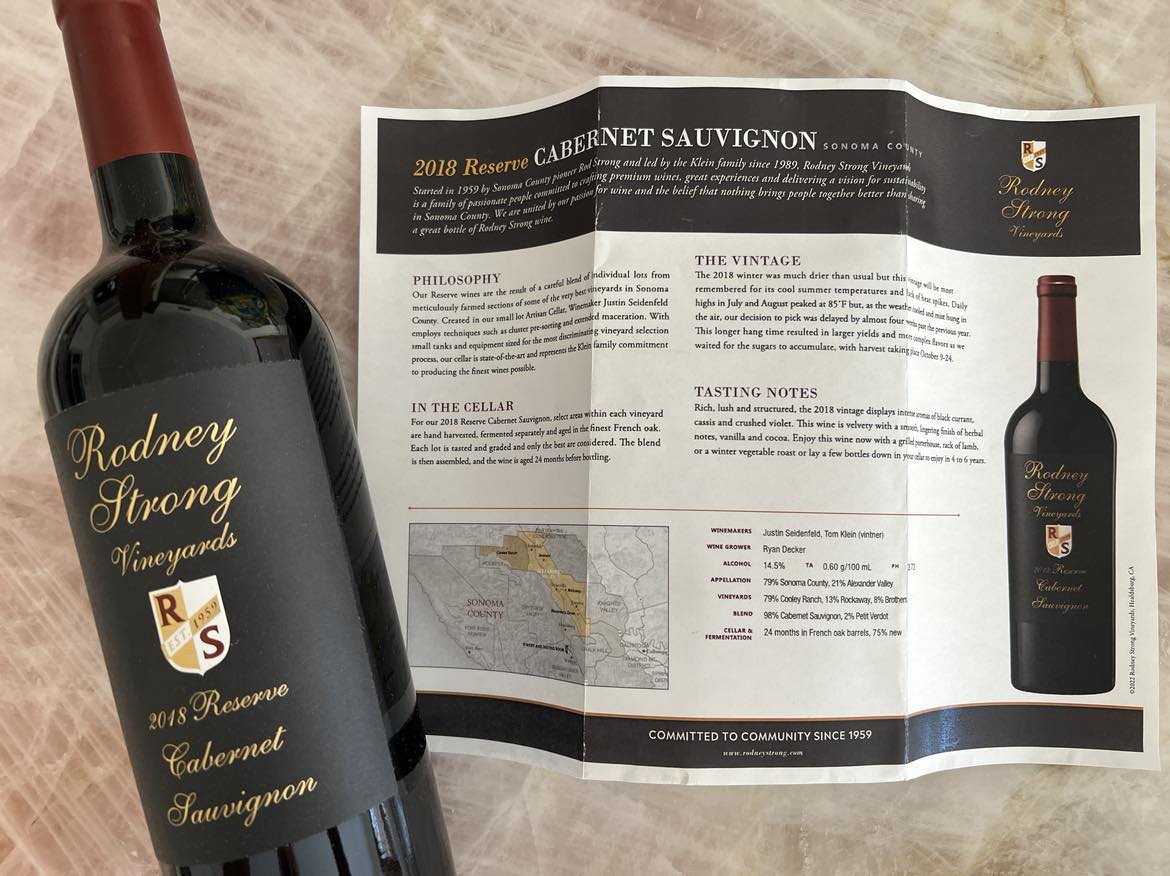
One Bottle Post: Rodney Strong Vineyards 2018 Reserve Cabernet Sauvignon, And Winning Over a White Wine Drinking Pal
The last time I wrote about Sonoma’s Rodney Strong Vineyards was when a winery representative came to Los Angeles and met with our #LAWineWriters group over lunch in Marina Del Rey. At that time we sampled their Rose of Pinot Noir and Sauvignon Blanc that can easily be found in local stores, but then moved onto wines…













